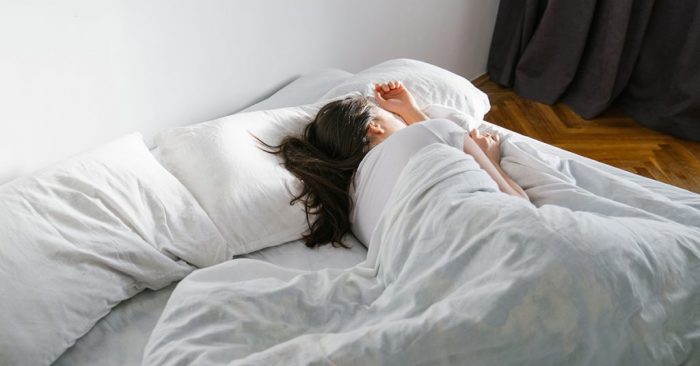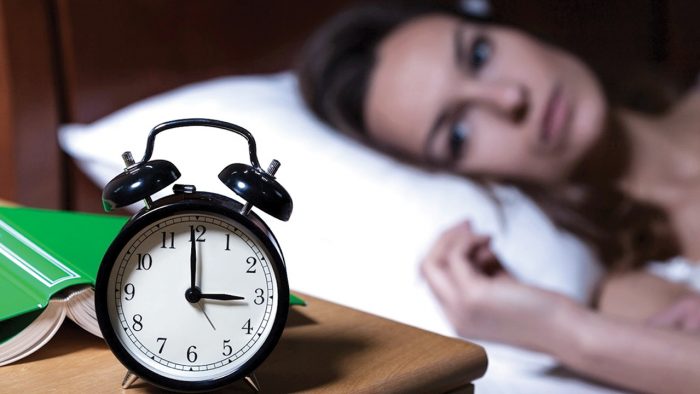Hallucinations are sensory perceptions that appear in the absence of stimuli. Although they are often associated with illnesses such as schizophrenia, these phenomena can occur in the absence of mental ill health. But what explains these uncanny occurrences?
There are many types of hallucinations. They can be visual (sight hallucinations), auditory (sound hallucinations), olfactory (smell hallucinations), gustatory (taste hallucinations), or tactile (touch hallucinations).
For every sense, a form of hallucination is possible. The reason for this is that these phenomena are “ghost sensations” — perceptions of stimuli in the absence of actual external stimuli.
More often than not, when people think of hallucinations, they associate them with illnesses that can involve psychosis, such as schizophrenia, or neurocognitive disorders, such as forms of dementia.
Hallucinations are also associated with the use of mind-altering drugs, including LSD and DMT.
But hallucinations are not always due to psychotic disorders or psychedelics. Sometimes, they occur in the absence of these factors.
So what explains hallucinations, how common are they, and what role might they teach us about ourselves? In this Special Feature, we investigate.
More common an occurrence than we think
A study that appeared in the British Journal of Psychiatry in 2017 suggests that hallucinations are far more common among people without psychotic disorders than scientists had previously thought.
The study authors — Dr. Ian Kelleher, from the Royal College of Surgeons in Ireland, and Jordan DeVylder, Ph.D., from the University of Maryland in Baltimore — analyzed data that they had obtained through the 2007 Adult Psychiatric Morbidity Survey, a nationally representative study of mental health in England.
These data included information on the mental health of 7,403 people aged 16 years and older throughout 1 year.
Dr. Kelleher and DeVylder found that visual and auditory hallucinations were almost equally prevalent among participants with borderline personality disorder and those with a nonpsychotic mental illness.
They also found that more than 4% of all the survey respondents — including those who had no diagnosed mental health issues — reported experiencing visual or auditory hallucinations.
“Hallucinations are more common than people realize. They can be frightening experiences, and few people openly talk about it,” Dr. Kelleher observed in an interview for International Business Times.
“Our research is valuable because it can show them they are not alone and that having these symptoms is not necessarily associated with having a mental health disorder. It breaks the taboo,” he added.
Research published in the Scandinavian Journal of Psychology in 2015 also showed that auditory hallucinations were surprisingly common in a representative sample of the general population in Norway.
In a cohort of 2,533 individuals, the “current lifetime prevalence of [auditory verbal hallucinations] was 7.3%.”
Phantom smells also seem to be a more common occurrence than people might think. In 2018, a study published in JAMA Otolaryngology — Head & Neck Surgery showed that 6.5% of people aged 40 years and over had experienced phantom odor perception.
This percentage is based on data from a cohort of 7,417 participants with a mean age of 58 years. However, when it came to explaining this phenomenon, the researchers were at a loss.
“The causes of phantom odor perception are not understood. The condition could be related to overactive odor-sensing cells in the nasal cavity or perhaps a malfunction in the part of the brain that understands odor signals,” says first author Kathleen Bainbridge, Ph.D., from the National Institute on Deafness and Other Communication Disorders at the National Institutes of Health (NIH) in Bethesda, MD.
Surprising potential mechanisms
Researchers have been trying to build a better understanding of the biological mechanisms behind the different types of hallucinations.
In 2019, investigators from the University of Oregon in Eugene conducted a study in mice to try to find out how hallucinations manifest in the brain.
Their study paper — published in Cell Reports — revealed some surprising findings. As the researchers induced visual hallucinations in the rodents by injecting them with a hallucinogenic substance, they saw that this did not “map out” how they expected it to in the brain.
The researchers observed that the hallucinating mice experienced fewer signals firing between the neurons of the visual cortex, the brain region associated with the interpretation of visual information.
“You might expect visual hallucinations would result from neurons in the brain firing like crazy or by mismatched signals. We were surprised to find that a hallucinogenic drug instead led to a reduction of activity in the visual cortex.” – Senior author Prof. Cris Niell
Despite the initial surprise, the study’s senior author notes that it makes sense that visual hallucinations should appear in the brain in this way.
“Understanding what’s happening in the world is a balance of taking in information and your interpretation of that information. If you’re putting less weight on what’s going on around you but then overinterpreting it, that could lead to hallucinations,” he explains.
There is also a large amount of research into the causes and mechanisms associated with auditory hallucinations — some of the most fascinating kinds of ghost sensations.
For instance, a 2017 study featuring in eLife goes some way toward explaining how and why some people may think they hear voices that are actually not there.
According to the authors, this may be the effect of an error or “short-circuit” in processing internal speech and differentiating it from speaking out loud.
When people speak out loud, the researchers explain, the brain does two things. First, it sends instructions to the vocal cords, tongue, and lips — our vocal apparatus — to prompt them to move in the right way so as to vocalize the correct sounds.
At the same time, the brain also makes an internal copy of these instructions, which scientists call the “efference copy.” This duplicate allows the brain regions associated with hearing to predict the sounds that the vocal apparatus is about to make correctly.
This is part of how we recognize our own voice and speech.
“The efference copy dampens the brain’s response to self-generated vocalizations, giving less mental resources to these sounds because they are so predictable,” explains first author Prof. Thomas Whitford.
Through their study, Prof. Whitford and his colleagues found that the brain makes an efference copy not just of the thoughts intended for vocalization, but also of the inner talk — the internal chatter that people process in the background without expressing out loud.
It is likely, the scientists hypothesize, that auditory hallucinations arise when something goes wrong with the efference copy of people’s internal monologues.
“We all hear voices in our heads. Perhaps the problem arises when our brain is unable to tell that we are the ones producing them.” – Prof. Thomas Whitford
What hallucinations teach us
Many of the hallucinations that people might experience are, in fact, of the run-of-the-mill variety. For example, a vague sensation that you have heard the phone ringing when no one actually called or catching the shadow of a silhouette from the corner of the eye when there is no one there.
Dr. Philip Corlett and Dr. Albert Powers, two scientists from Yale University and the Connecticut Mental Health Center in New Haven, CT, have conducted many experiments into the nature of hallucinations.
They argue that there is a spectrum of phantom sensations and that many hallucinations might actually reflect how our brains work — namely, by making predictions about stimuli and the environments that we navigate.
In a paper published in World Psychiatry in 2018, they write that hallucinations might emerge from a “mismatch” between the predictions that our brains make about our surrounding reality and the actual reality.
In another study paper, published in 2017 in the journal Science, the two researchers and Dr. Christoph Mathys, an associate professor at Aarhus University in Denmark, present the evidence they collected through a series of experiments that appear to support this notion.
“When we go about the world, we’re not just passively perceiving sensory inputs through our eyes and ears. We actually build a model in our minds of what we expect to be present,” Dr. Corlett told The Atlantic, noting that when those expectations do not come to pass, this may sometimes translate as a hallucination.
Other scientists note that even more pronounced hallucinations could sometimes be of benefit to the person experiencing them.
In a 2017 paper in Psychology and Psychotherapy: Theory, Research and Practice, Drs. Filippo Varese, Warren Mansell, and Sara Tai — from the University of Manchester in the United Kingdom — note that not all auditory hallucinations are distressing.
Their study, which enlisted people with mental health issues who also experienced auditory hallucinations, found that how people reacted to the voices that they thought they heard made an important difference to whether those voices hindered or encouraged them in their daily pursuits.
“Most voice-hearers with mental health difficulties in our study experienced their voices as a hindrance to achieving their goals and viewed their voices as distressing and problematic. But other voice-hearers find that voices facilitate their valued goals and are, therefore, a pleasant and constructive part of their lives,” Dr. Varese points out.
Going forward, the researchers say, such insights might help mental health professionals assist their clients in turning the tables on potentially distressing hallucinations.
“[…] we should seek to help clients explore how their voices relate to goals that are important to them and empower them to progress toward those goals. That would be a more meaningful and acceptable way of supporting them,” he suggests.










